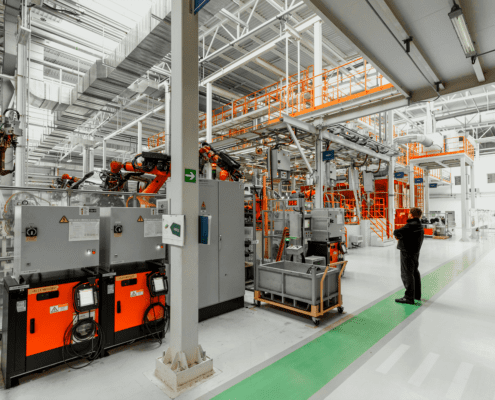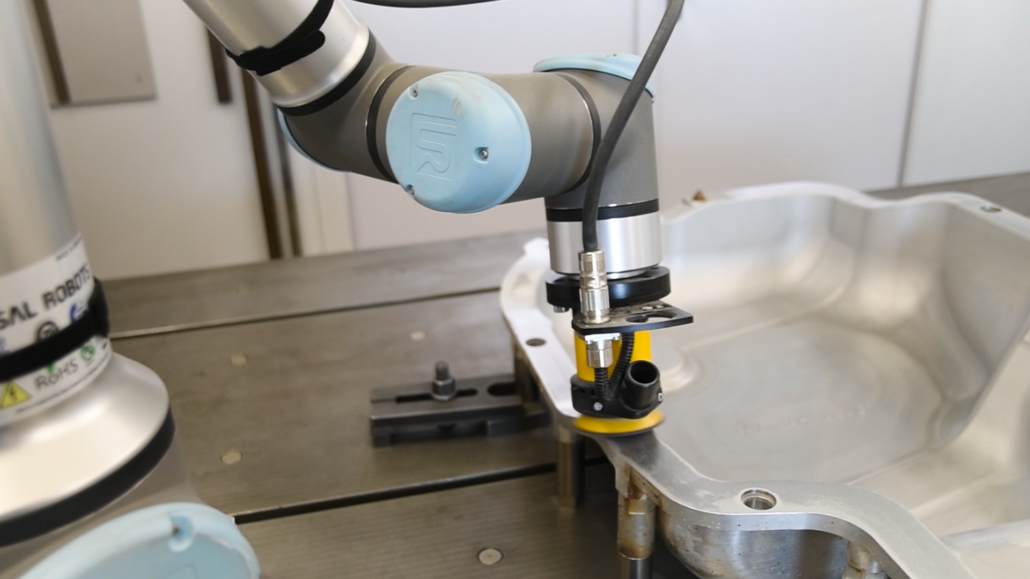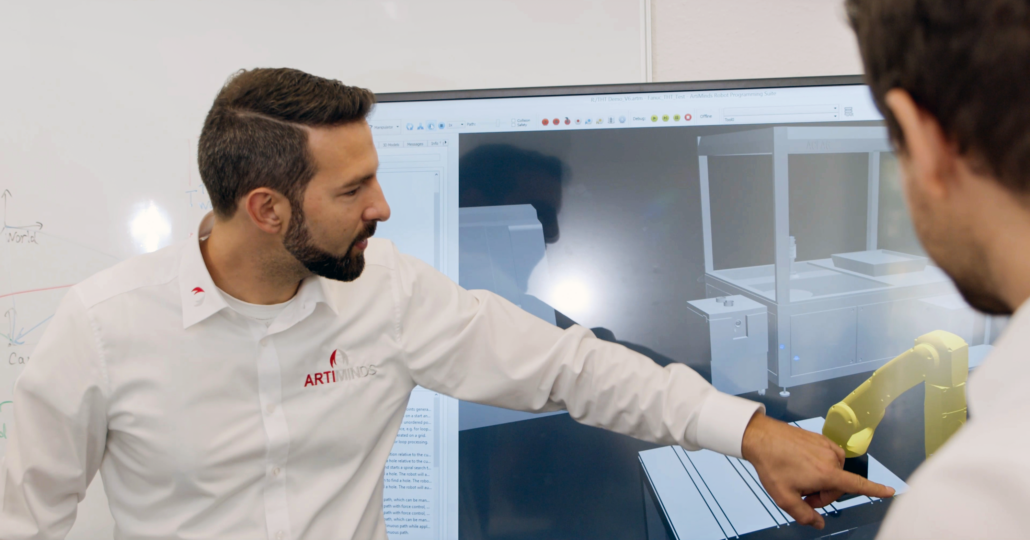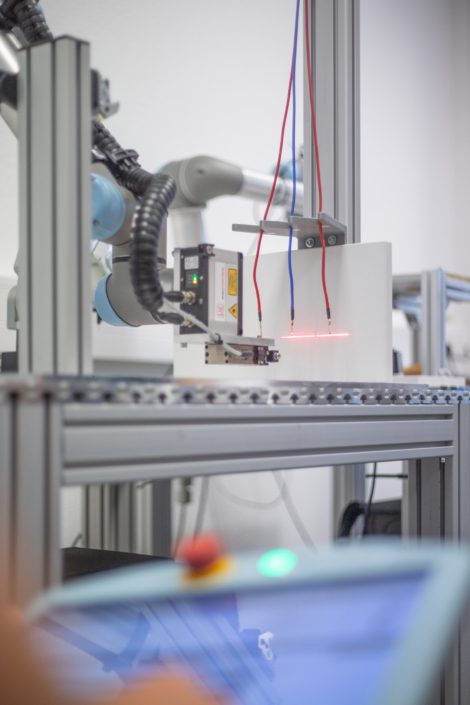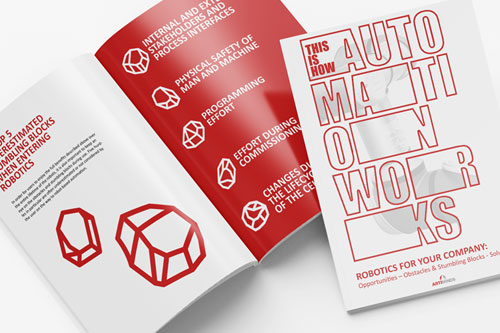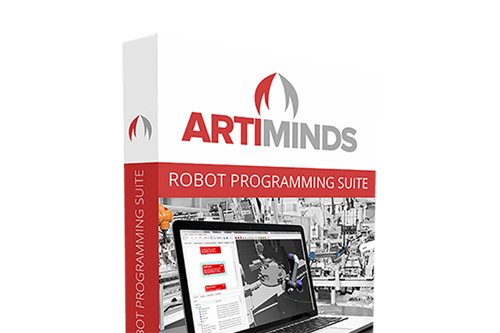BLOG POST
Could the use of robots fail?
Automation 4.0: Successful integration of robots into industrial processes
The complexity of automated projects requires careful planning and implementation in order to master the balancing act between cost-effectiveness, process optimization and employee attractiveness. At the same time, market conditions are currently anything but stable. New, more flexible automation solutions with robots are needed to protect companies against short-term changes and requirements and to maintain their competitiveness. However, for robot-based solutions to lead to cost savings and increased efficiency, it is less about having the right technology and hardware and more about structured preliminary considerations and the development of innovative automation concepts.
Advancing industrial automation is a response to challenges such as cost pressure, a shortage of skilled workers, tight supply chains and the continuous need for process optimization and digitalization. Companies are faced with the task of making production processes economical, efficient and at the same time attractive and ergonomic for employees.
Robots are increasingly coming into focus as automation assistants, as they enable flexible automation, especially where conventional special machines reach their limits. However, limiting factors such as the complexity of the application, the interlinking of many individual process steps or limited space can make automation projects more difficult or even cause them to fail.
Companies often underestimate the potential of sensor-adaptive robotics and lack an eye for new automation approaches. Robots in combination with sensors and modern programming software open up completely new possibilities (Automation 4.0). However, successful implementation requires careful planning and smooth integration into existing processes and systems.
What should companies bear in mind to ensure that the process from pre-evaluation and a feasibility study through to implementation is time- and cost-efficient? What internal robotics expertise is required and what are the advantages of external support?
Automation 4.0: Analyzed, well thought out, well prepared
A successful automation project always begins with a thorough analysis of the current status quo and the desired target status. It is important not only to look at the simple, obvious (manual) work steps, but also to analyze complex processes. It does not matter whether these have already been (partially) automated or are still carried out completely manually. Where can costs be saved or efficiency increased, or where must certain quality requirements be met and compliance documented?
To implement Automation 4.0 successfully, external experts play a decisive role in this phase, as they identify new approaches with fresh ideas and a trained eye. They not only help to address previously unconsidered work steps, but also provide solutions as to how previously seemingly non-automatable processes can be automated using robots.
Once a potential application has been identified, it is important to precisely evaluate the benefits of reclocking or rebalancing a line. This involves questions such as whether the time savings gained can be passed on at all in subsequent processes or whether the additional production can actually be sold. Valid feasibility studies and precise ROI calculations form the conclusion of the analysis phase in order to successfully start the actual implementation.
Robot roulette
The choice between an industrial robot and a collaborative robot is crucial when implementing Automation 4.0 and depends on various factors. These include the specific task, the solution approach developed, and the degree of human-robot collaboration required. A fenceless cobot can work hand in hand with humans, but is inherently slower than an enclosed industrial robot due to its safety precautions. The performance and load capacity of cobots are also generally lower. Depending on the degree of danger of the task, e.g. when using sharp or pointed tools, additional safety concepts may still be necessary.
All these points should be taken into account when making a selection, even if the simpler programming of cobots sounds very tempting to users.
Today, modern software solutions make it easy to program robots without extensive knowledge, thus unlocking Automation 4.0. A graphical programming interface is the basis for programming and parameterizing even complex motion sequences and paths using function blocks. Manufacturer-independent low-code tools already offer integrated interfaces so that force and vision sensors, laser scanners or controllers can be integrated seamlessly and without extra effort. The right software not only enables the implementation of complex tasks, but also automatically analyzes and compensates for process tolerances and variances, for example. This means that processes can also be effectively automated with industrial robots and optimized in terms of cycle times and accuracy.
Automation without any pitfalls
Space is often a limiting factor, especially in brownfield environments. There is usually hardly any free space available and running systems cannot simply be relocated. Production facilities built from scratch (greenfield) offer more flexibility and scope, as the required space can be taken into account at the planning stage.
The automation of secondary processes can also become a challenge, e.g. if material cannot be fed in individually or the removal of material to the next process step is challenging. Even in complex manufacturing processes with many work steps, planners often come up against limits, as the diversity and complexity of the tasks are difficult for machines or robots to master. In purely cognitive terms, humans seem to have an advantage here. However, as soon as processes and compliance with specifications have to be verifiably documented, human lack the digital basis that robots or machines can provide. The same applies to reproducibility.
A thorough process analysis is therefore crucial in order to identify suitable work steps and their requirements. This often reveals that the greatest potential lies not in the automation of the overall process, but in the core operation, such as a difficult joining process that requires high precision.
The advantages of the flexibility of manual workstations are often underestimated. If, for example, customer requirements have to be met at short notice, the worker can process workpieces out of sequence. With automated processes, this no longer seems to be possible without further ado. However, due to their variability, robot cells offer precisely this necessary flexibility. However, modern programming approaches with low-code software solutions and a forward-looking integration concept are also essential here. Early professional support in the analysis and identification of automation potential speeds up the process, saves time, effort and increases the chances of success.
Automation 4.0 – The journey is the destination
The success of a robot-based automation project depends not only on optimum technical implementation, but also on holistic integration into existing processes and operating procedures. This requires thorough preparation. Early professional support, starting with the analysis and identification of automation potential, enables the successful implementation of automation tasks.
External application and robotics experts compensate for a lack of resources such as time, know-how and personnel by providing support and assistance from concept development, feasibility studies and prototyping through to industrialization in order to successfully master new automation tasks. This is a great advantage, especially for complex applications with force sensors, image processing systems, complex tool paths or PLC control.
And a welcome side effect: your own team learns throughout such projects, so that well-founded expertise is built up sustainably within your own company.
With a structured analysis, well thought-out selection of robots and peripheral devices and modern software tools, while taking into account limiting factors and potential pitfalls, new perspectives are opening up in the automated industry.
The future promises even more exciting developments, as advanced applications that were previously difficult to automate can now be implemented economically. From highly-difficult manufacturing processes to delicate work steps – robot automation will offer even more possibilities in the future.
With this white paper, we want to provide you with guidance for your automation plans. To help you to avoid typical pitfalls when using robots, we highlight the top 5 underestimated challenges and stumbling blocks when getting started in robotics and provide you with helpful tips and interactive checklists.
Program and simulate robot applications independent of manufacturers, reduce maintenance costs and alleviate the lack of skilled workforces. Find out how ZF succeeds thanks to ArtiMinds!
MUCH MORE THAN JUST SIMPLE ROBOT PROGRAMMING: With RPS you create cross-process standardization – from planning and programming to maintenance.

